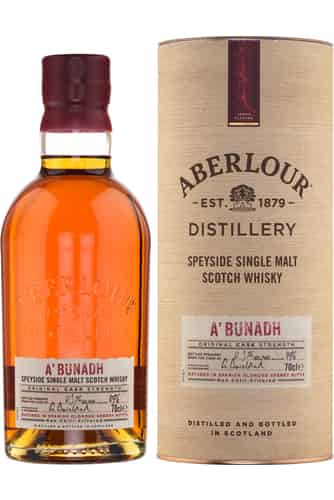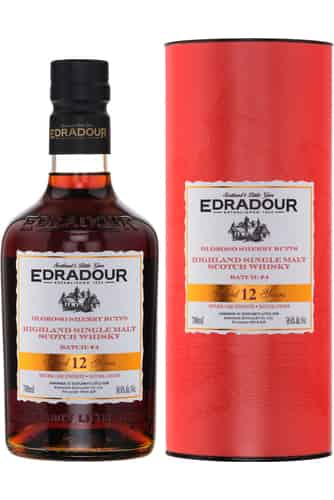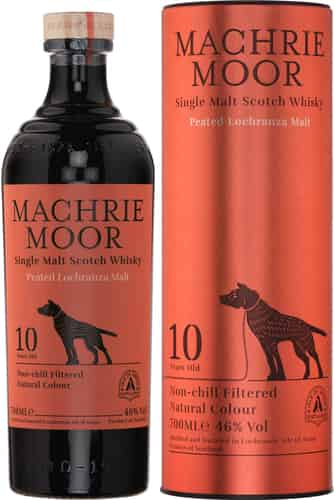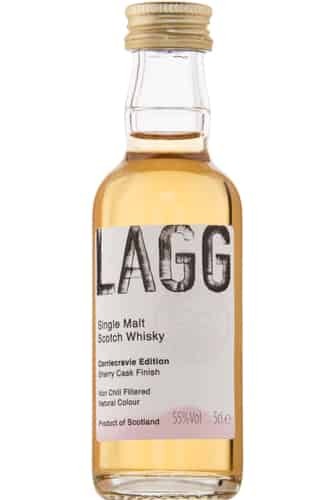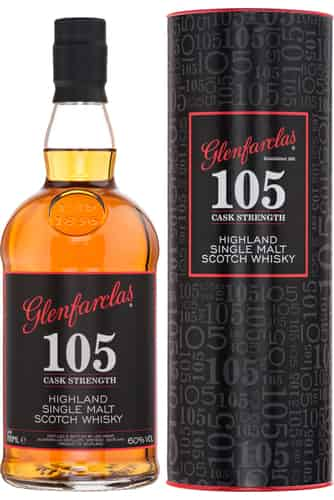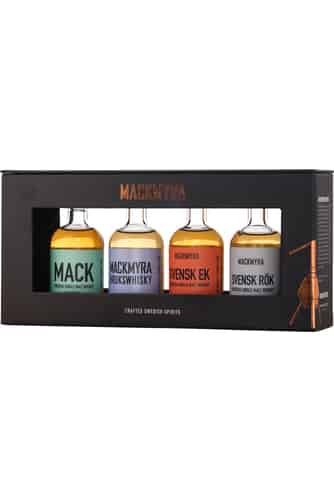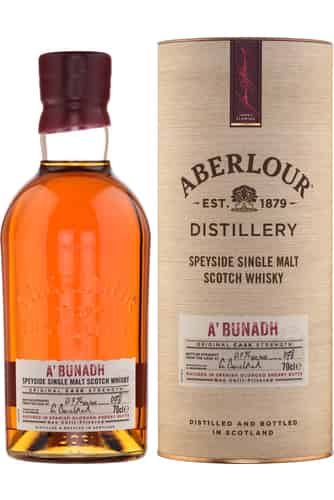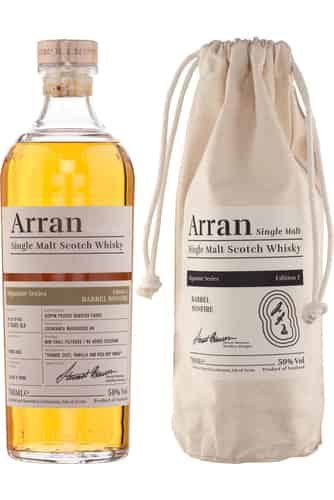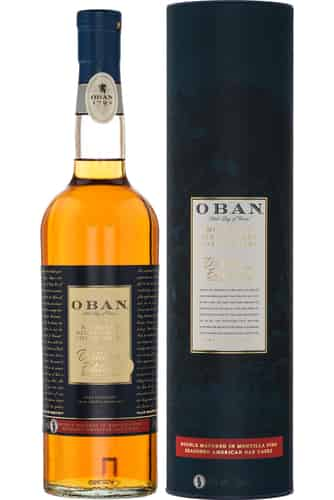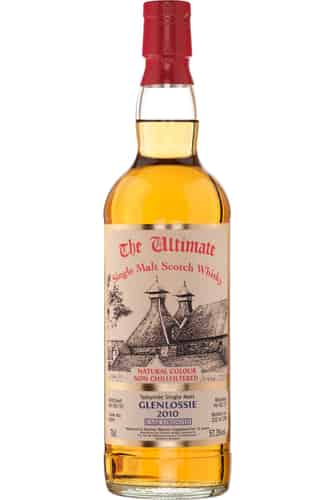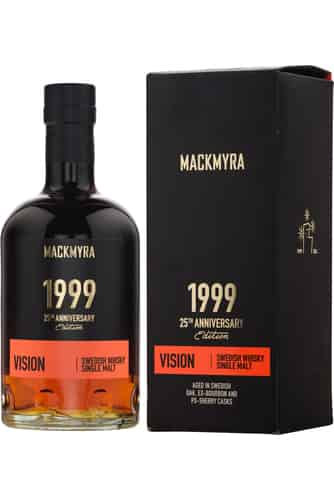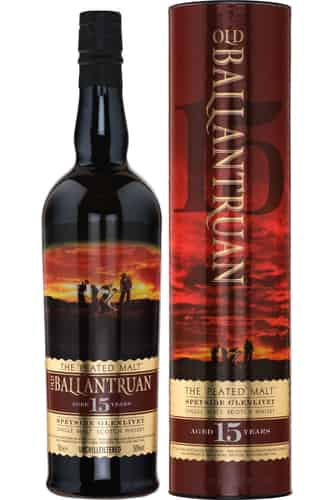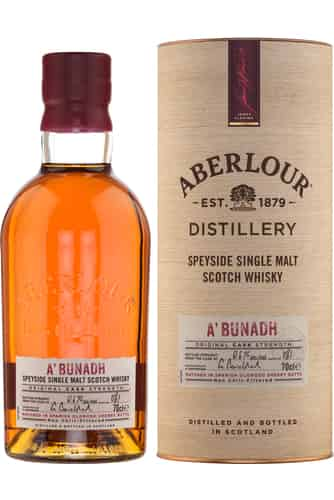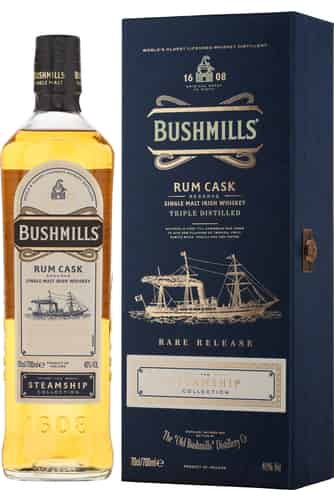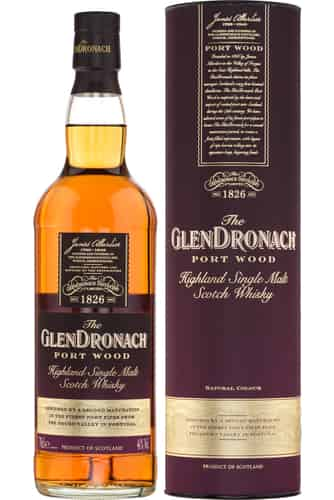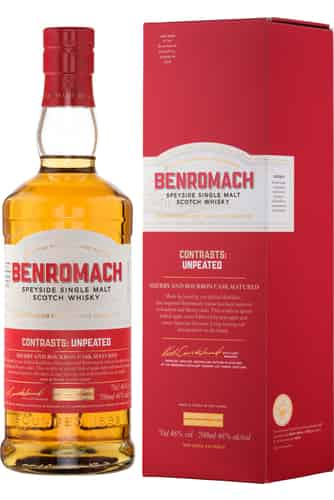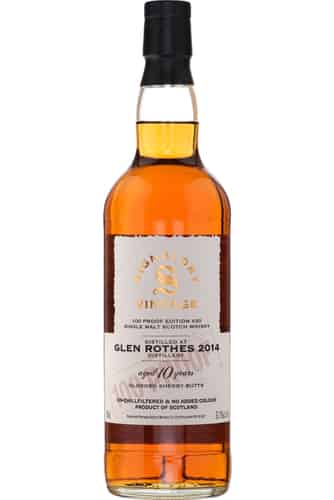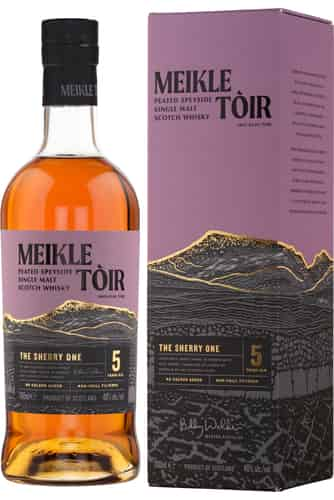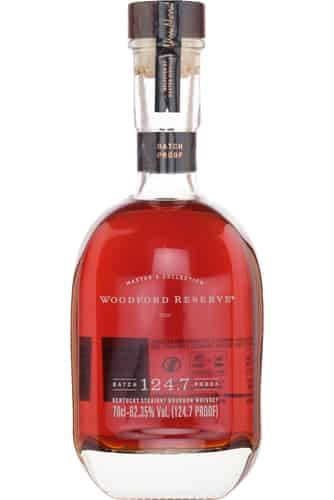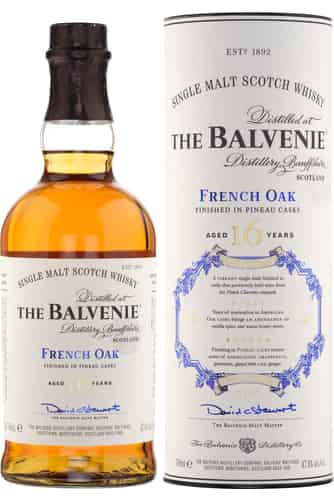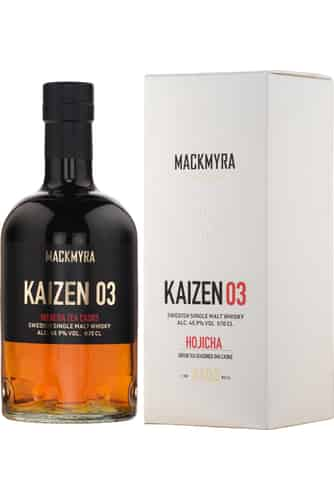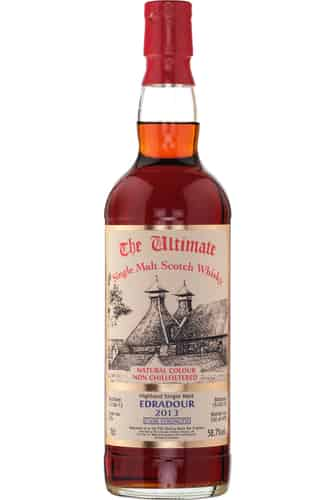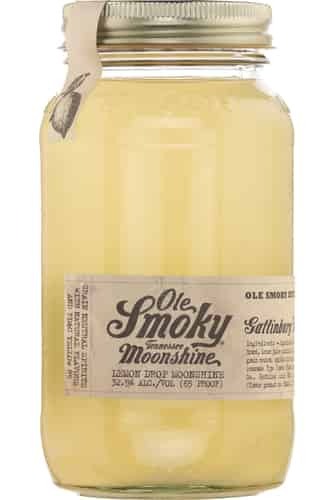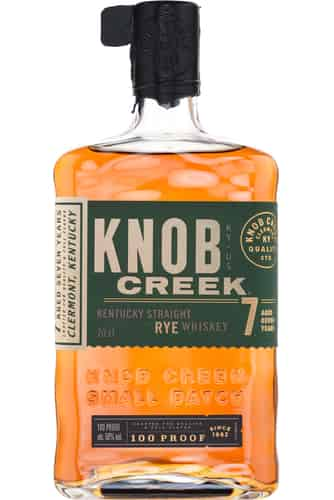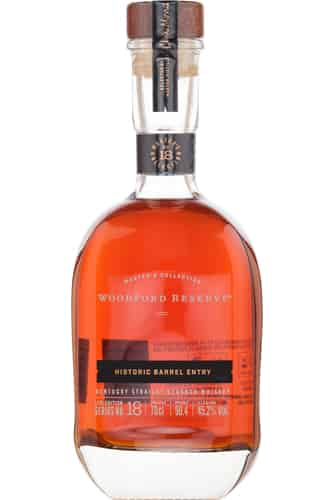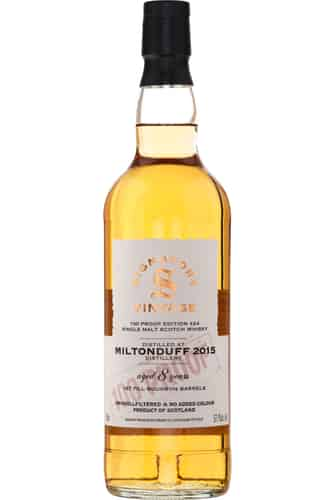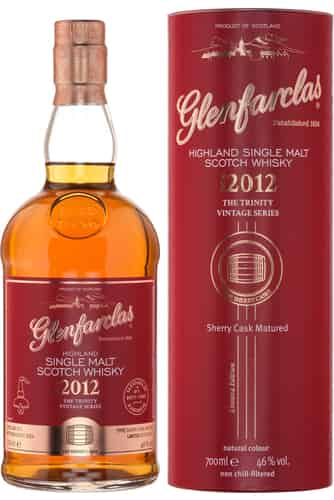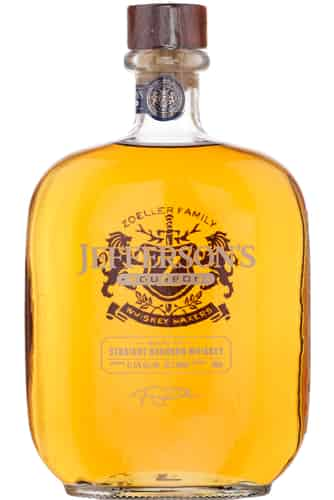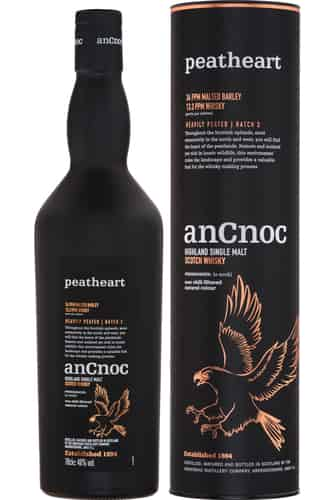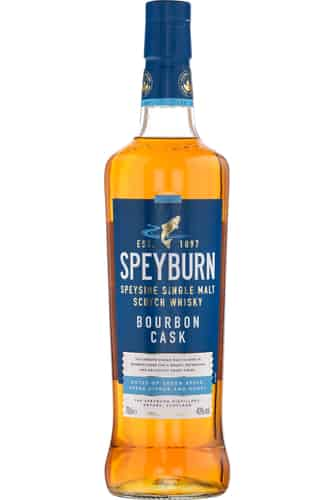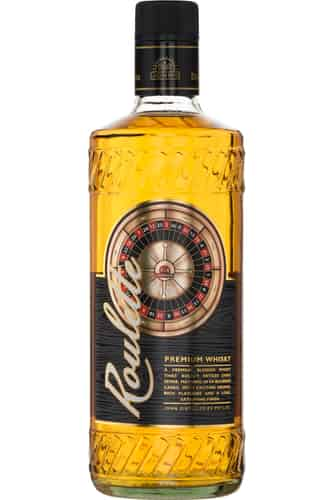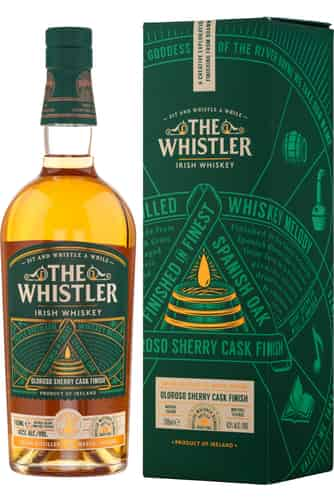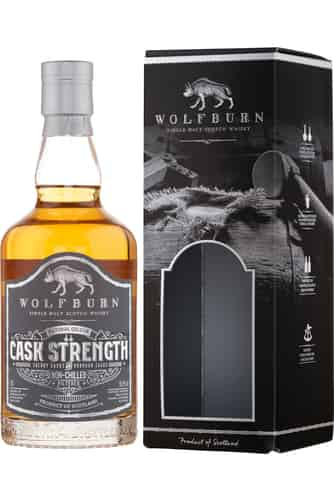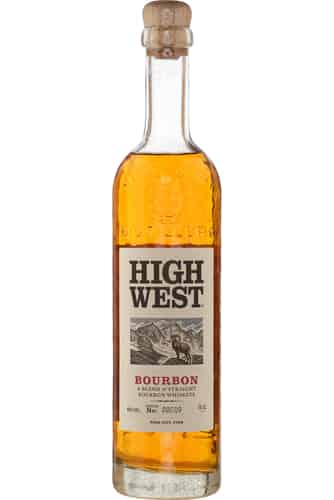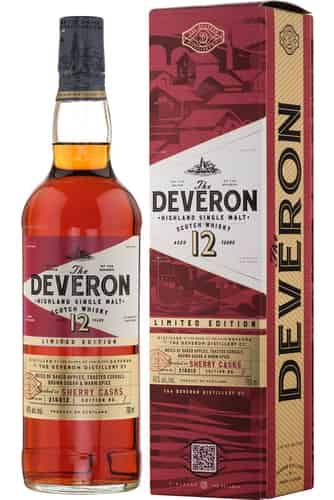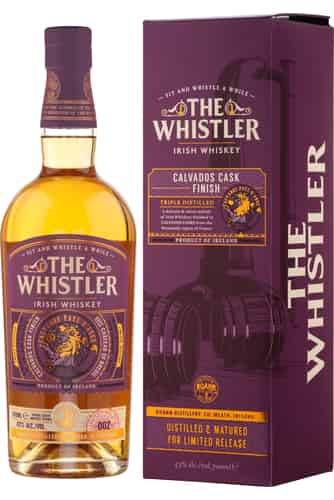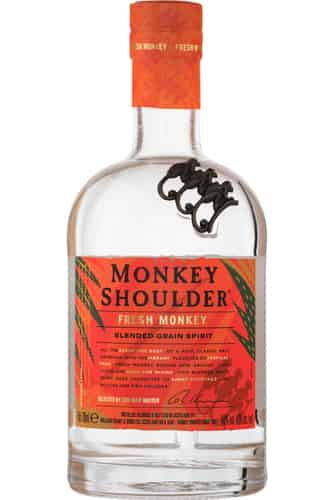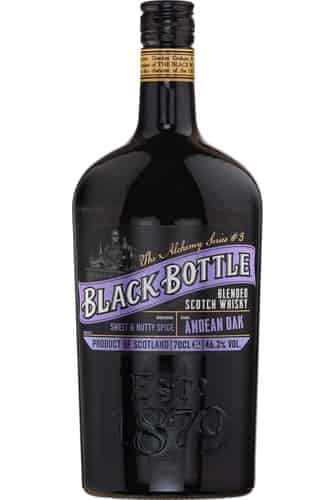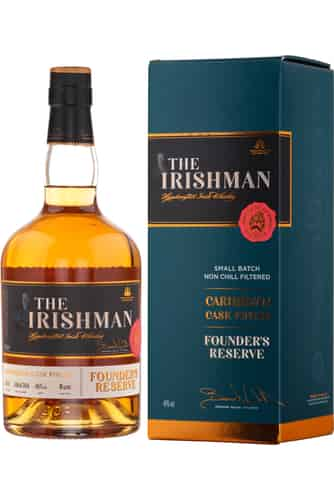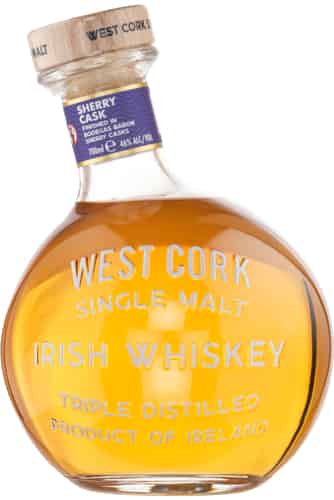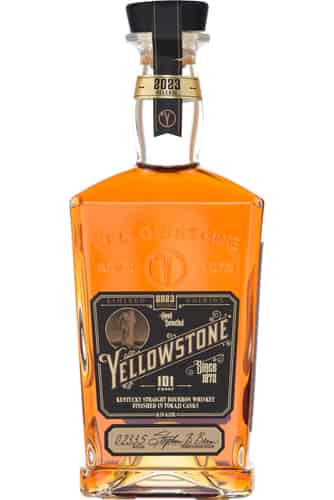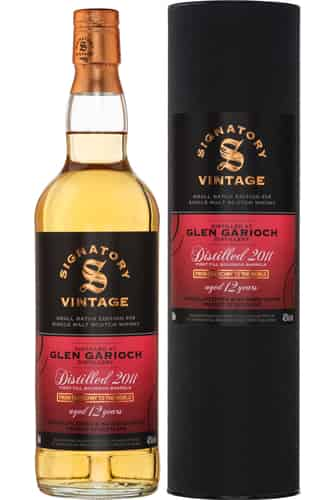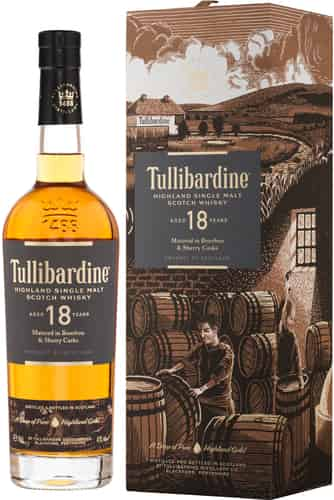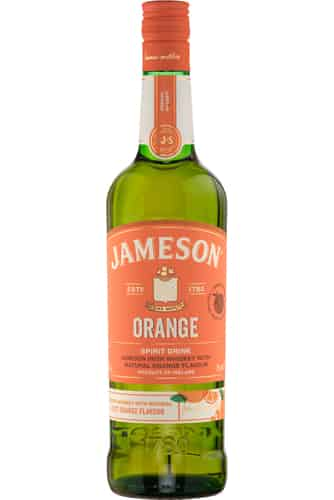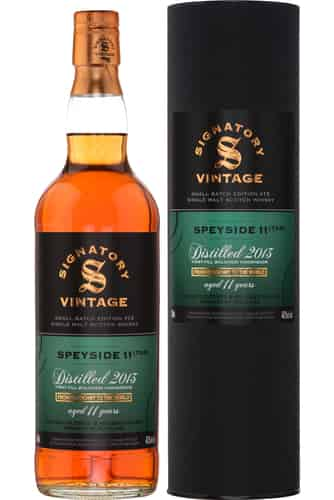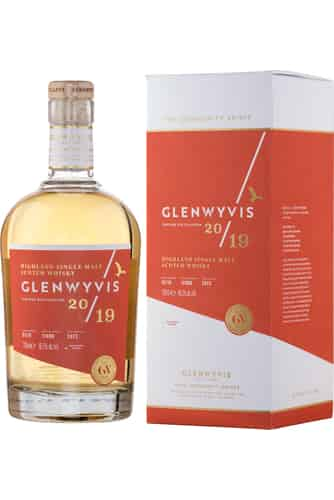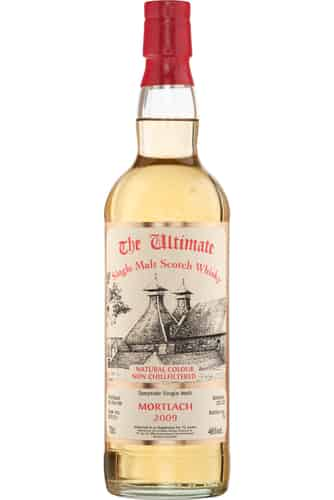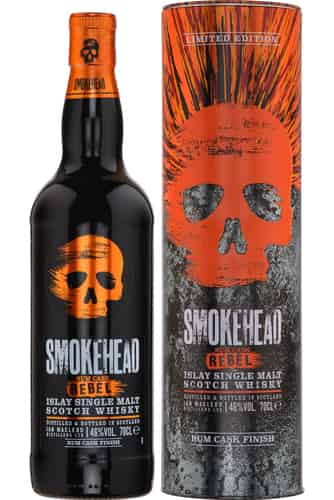 United States - DHL 15.00 € + 7.70 € /kg
United States - DHL 15.00 € + 7.70 € /kg
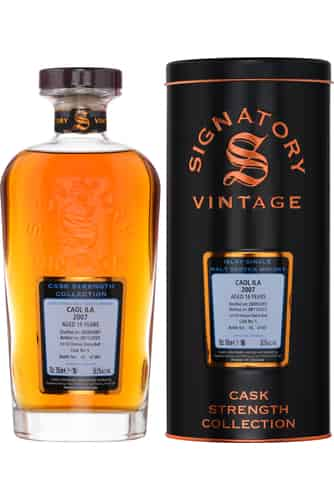
Caol Ila 16 Year Old 2007 (Cask #5) - Signatory Cask Strength
70 cl, 58.5%In stock137.60 €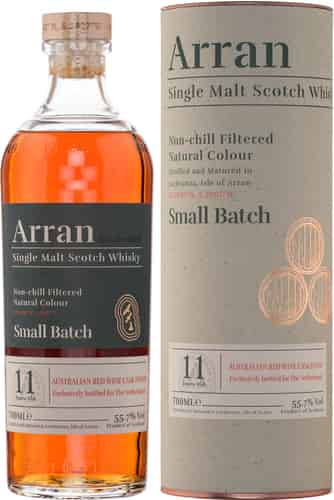
Arran 11 Year Old Small Back Australian Red Wine Cask
70 cl, 55.7%In stock73.60 €![]()
Lagavulin Distiller's Edition
70 cl, 43%In stock97.60 €![]()
Aberlour A'Bunadh Batch 76
70 cl, 61.3%In stock76.80 €![]()
Edradour 12 Year Old Cask Strength (Batch 4)
70 cl, 58.6%In stock103.20 €![]()
Arran Machrie Moor 10 Year Old
70 cl, 46%In stock57.60 €![]()
Lagg Corriecravie Miniature
5 cl, 55%In stock5.60 €![]()
Lagg Kilmory Miniature
5 cl, 46%In stock4.80 €![]()
Glenfarclas 105
70 cl, 60%In stock60.00 €![]()
Mackmyra Classic Collection Miniature Set - 4 x 5 cl
20 cl, 43.4%In stock26.40 €![]()
Aberlour A'Bunadh Batch 78
70 cl, 60.7%In stock76.80 €![]()
Arran Signature Series Edition 2 - Barrel Bonfire
70 cl, 50%In stock89.60 €![]()
Oban Distiller's Edition
70 cl, 43%In stock76.00 €![]()
Bushmills 14 Year Old Malaga Casks
70 cl, 40%In stock59.20 €![]()
Glenlossie 12 Year Old 2010 (Cask #4041) - The Ultimate Whisky Company
70 cl, 57.3%In stock60.00 €![]()
Mackmyra 1999 Vision
70 cl, 45.2%In stock87.20 €![]()
Jack Daniel’s McLaren X JD 2024 Edition
70 cl, 40%In stock29.60 €![]()
Old Ballantruan 15 Year Old
70 cl, 50%In stock85.60 €![]()
Aberlour A'Bunadh Batch 81
70 cl, 61.6%In stock76.80 €![]()
Bushmills Steamship Rum Cask
70 cl, 40%In stock72.80 €![]()
Glendronach Port Wood
70 cl, 46%In stock60.00 €![]()
Benromach Contrasts: Unpeated 2014 (Bottled 2024)
70 cl, 46%In stock56.00 €![]()
Glenrothes 10 Year Old 2014 - Signatory 100 Proof
70 cl, 57.1%In stock51.20 €![]()
Meikle Toir 5 Year Old The Original
70 cl, 50%In stock48.80 €![]()
Remarkable Regional Malts Gift Set - 6 x 5 cl
30 cl, 48%In stock33.60 €![]()
Woodford Reserve Master's Collection Batch Proof (2023 Release)
70 cl, 62.35%In stock126.40 €![]()
Balvenie 16 Year Old French Oak
70 cl, 47.6%In stock182.40 €![]()
Mackmyra Kaizen 03
70 cl, 45.9%In stock72.00 €![]()
Edradour 9 Year Old 2013 (Cask #276) - The Ultimate Whisky Company
70 cl, 58.7%In stock87.20 €![]()
Suntory Toki (1 Liter)
100 cl, 43%In stock34.40 €![]()
Kilchoman Loch Gruinart
70 cl, 46%In stock60.00 €![]()
Ole Smoky Moonshine Lemon Drop Moonshine (70 cl)
70 cl, 32.5%In stock24.00 €![]()
Knob Creek 7 Year Old Rye
70 cl, 50%In stock44.00 €![]()
Woodford Reserve Master's Collection Historic Barrel Entry
70 cl, 45.2%In stock118.40 €![]()
Bladnoch 13 Year Old
70 cl, 46.7%In stock78.40 €![]()
Miltonduff 8 Year Old 2015 - Signatory 100 Proof
70 cl, 57.1%In stock51.20 €![]()
Glenfarclas Vintage 2012 Trinity Vintage Series (Bottled 2024)
70 cl, 46%In stock58.40 €![]()
Jefferson's Bourbon
70 cl, 41.15%In stock43.20 €![]()
anCnoc Peatheart Batch 3
70 cl, 46%In stock55.20 €![]()
Speyburn Bourbon Cask
70 cl, 40%In stock23.20 €![]()
Paul John Roulette
70 cl, 40%In stock18.40 €![]()
The Whistler Calvados Cask Finish
70 cl, 43%In stock36.00 €![]()
Wolfburn Cask Strength - 2023 Limited Release
70 cl, 56.9%In stock68.00 €![]()
High West Bourbon
70 cl, 46%In stock46.40 €![]()
Bache Gabrielsen 5 Year Old Whisky
70 cl, 41%In stock40.00 €![]()
The Deveron 12 Year Old Sherry Cask Finish
70 cl, 40%In stock39.20 €![]()
The Whistler Oloroso Sherry Cask Finish
70 cl, 43%In stock36.00 €![]()
Monkey Shoulder Fresh Monkey
70 cl, 40%In stock29.60 €![]()
Black Bottle Andean Oak
70 cl, 46.3%In stock25.60 €![]()
The Irishman Founder's Reserve Caribbean Cask Finish
70 cl, 46%In stock55.20 €![]()
West Cork Maritime Single Malt Sherry Finish
70 cl, 46%In stock36.80 €![]()
Yellowstone Select Limited Edition 2023
75 cl, 50.5%In stock137.60 €![]()
Glen Garioch 12 Year Old 2011 Small Batch Edition #14 - Signatory Vintage
70 cl, 48.2%In stock65.60 €![]()
Tullibardine 18 Year Old
70 cl, 43%In stock85.60 €![]()
Jameson Orange
70 cl, 30%In stock19.20 €![]()
Speyside (TAM) 11 Year Old 2013 Small Batch Edition #13 - Signatory Vintage
70 cl, 48.2%In stock65.60 €![]()
Glen Wyvis 2019 (Bottled 2023)
70 cl, 46.5%In stock58.40 €![]()
Torabhaig Cnoc Na Moine Batch 3
70 cl, 46%In stock58.40 €![]()
Mortlach 12 Year Old 2009 (Cask #305121) - The Ultimate Whisky Company
70 cl, 46%In stock46.40 €![]()
Smokehead Rum Rebel
70 cl, 46%In stock50.40 €
Sorry, we didn't find anything. Please try changing your search criteria.
Whisky History
Whisky, probably the greatest drink in the world, has a colourful history spanning centuries, if not millennia, and nearly every continent on the planet. Wherever humans have grown crops they have created a spirit, be that agave-based tequila in Mexico, potato-based vodka in Russia, grape-based brandy in France, sweet potato and rice based Shōchū in Japan. Yet the most complex and subtle of all spirits is undoubtedly whisky. This spirit - a combination of skill, tradition and innovation - has created a global subculture of enamoured drinkers, all seeking their next flavour adventure!
There is evidence of chemical distillation by Mesopotanians in second millennium BC, though this was not to produce alcohol. Greeks were performing distillation in the first century AD, though this was of perfumes and aromatics. In the middle ages, medieval Arabs were distilling chemicals, but again, no alcohol. The first alcoholic distillations were done by Italians in the 12th century, creating spirit from wine, for medicinal purposes. Aqua vitae, a relative of whisky’s, was being distilled across Europe during the 13th century, and whisky was being made in Scotland by at latest the 15th century.
The definition of the spirit is a fairly loose one- it is a high proof alcoholic drink made from fermented grain mash. As such, within whisky itself there is enormous variety, usually due to the use of whatever local grain was in abundance- from the sweet unmalted barley whiskey found in Ireland (where the first licensed distillery is found), to the spicy rye whisky from Canada, to the sweet maize based bourbon of the Southern United States, to the delicate and flavourful whiskies of Japan, to the experimental and heavily oaked whisky of Tasmania and India. Most famous of all, of course, is Scotch whisky, both in its well balanced and rounded blended form, and its spectacular, nuanced and precise single malt style- probably the King of all whiskies.
The word whisky is a corruption uisge baugh- from the Gaelic meaning "water of life". This is very apt, as wherever the spirit is found so is a liveliness and vibrancy, whether that be the craft and guile of the distillers themselves, or the inventive cocktails the libation is often used in, or the drams shared at home with good friends. Whisky is reflective of humanity’s creative, ingenious and social spirit.
Timeline
-
2000 BC
Some evidence that distillation was practiced by Babylonians.
-
100 AD
Distillation of chemicals performed by ancient Greeks.
-
900
Distillation of chemicals in the Middle East.
-
1200
Medical distillation of wines in Italy occurs in monasteries.
-
1300s
Distilling sweeps Europe, with Aqua Vitae being produced across the continent, notably spreading to the whisky hotspots of Ireland and Scotland.
-
1405
First written reference to whisky production in Ireland occurs in the Annals of Clonmacnoise, in which a chieftain’s death is put down to drinking a "surfeit of aqua vitae". By this time whisky production had moved from the religious, monastic setting to a secular, if medical practice, performed by the Guild of Surgeon Barbers.
-
1494
First written reference to Scottish whisky, in the Exchequer Rolls, detailing a shipment of malt to a "Friar John Cor, by order of the king, to make aquavitae". The King, James IV of Scotland was a big whisky drinker, and during his reign purchased many bottles.
-
1536
Henry VIII’s reformation of the English church saw many of the monasteries that were producing whisky closed and dissolved. Distilling then became a key form of income for many former monks now in the general public. Distilling also forms and additional income source for many famers with an excess of grain.
-
1608
A distillery on the site of Bushmill’s in Northern Ireland is given its licence to distil, though the Bushmill’s as we know it was founded in 1784. This one of the earliest licenced distilleries in the world.
-
1608
A distillery on the site of Bushmill’s in Northern Ireland is given its licence to distil, though the Bushmill’s as we know it was founded in 1784. This one of the earliest licenced distilleries in the world.
During this century the use of the cask for flavouring the whisky became understood, with fortified European wines such as port, madeira, and (most commonly) sherry, taking precedence in Scotch whisky maturing.
-
1707
The Act of the Union between England and Scotland rose taxes on Whisky considerably. Driving a lot of whisky production underground.
-
1725
This taxation continued with the English Malt Tax, a levy on malted barley, largely credited for indirectly causing the creation of the distinctive Irish whisky style, with its sweet unmalted barley making up some of the mashbill to reduce tax costs.
By this time an estimated half of the distilling in Scotland was happening illegally. Often distillers would create their wares at night (to hide the smoke from the stills), under the moon, giving rise to the name "moonshine".
-
1760s
Migrants from England and Scotland bring distilling to America, with whisky later used as a currency during the American Revolution. Indeed, George Washington owned a distillery. Given the limited infrastructure and great size of the fledging nation, many farmers decided to turn their crop of maize (or corn) into whiskey, for manoeuvrability and profitability.
-
1783
Evan Williams opens the first commercial bourbon distillery in Kentucky, which had yet to separate from Virginia.
-
1789
Elijah Craig, preacher, opens a distillery and supposedly invents "aging" the spirit in charred casks. Whilst the charring of his casks may have been an original concept, aging of whiskey was mostly likely a by product of transportation in oak casks, not at all unique to his whiskey.
-
1790s
Bourbon as we know it did not really emerge until after the American revolution when pioneers pushed west. One of the first counties they founded was the huge Bourbon county in Kentucky, named after the French royal family. This was eventually sliced into many smaller counties, but many people referred to it as "Old Bourbon". As the key port of Maysville lay within the historic county, barrels of corn whisky were stencilled with the county name. As this was the first oak barrelled corn whisky that many within America and abroad would taste, it took the name "Bourbon" from its origin, becoming synonymous with corn whisky in general. The Beam family begin distilling in 1795.
One of the first acts of the new national American government was to levy a "whisky tax" leading to an armed insurrection known was the "whisky rebellion".
-
1800s
This was the century in which industrialisation would take whisky from small scale cottage industry to international luxury good market.
Many famous Scottish distilleries were founded in the early part of the century, such as Ardbeg, Laphroaig, Lagavulin, and Brora.
-
1823
The British government introduced an excise act that permitted the act of distilling in return for a small tax. Stills had to be above 40 gallons in capacity. Scottish moonshine production ended. Glenlivet distillery is the first to apply for this licence in 1824.
The size restraint heralded a boom in the whisky industry, with a flood of new distilleries being founded throughout the century. Whisky moved out of the shed and into the warehouse. Industrial advances in distilling allowed for great expansions in the amount of spirit that could be produced.
Once such development was the Coffey still (invented in 1831), a type of column still that allowed for continuous distillation, as opposed to the batch distillation of the pot still. This meant that grain whisky could be produced on a scale not seen before. Grain whisky was often blended with malt whisky, giving birth to the blended Scotch style of the spirit- now one of the most popular in the world.
At the start of this century, Scotch had started to be exported to India, with the first distillery in the nation being built in the late 1820s.
In America, sour mash is developed, in which a portion of used yeast is added to the mashtun to balance the PH of the mixture and prevent the growth of harmful bacteria, whilst kickstarting fermentation.
-
1842
Cadenhead’s is founded as one of the first independent bottlers of rum and whisky.
-
1853
A US naval convoy brings over 100 gallons of American whiskey to Japan, as a gift to the emperor, sparking a taste for the spirit.
-
1860s
The American Civil War largely halts bourbon production as men in the South are drawn from their distillery jobs to fight. After the war, Major Benjamin Blanton of the confederate army founds Blanton’s distillery.
-
1880s
Production of French wine and brandy is destroyed by the phylloxera crop. Discerning drinkers turned to Scotch whisky as the spirit of choice. A boom in demand led to a boom in production, and many distilleries were founded during this decade- notably including Bruichladdich!
Manufacturing of a sort of whisky known as "Yoshu" (foreign liquor) takes off in Japan. The Konishi company of brewers and distillers was producing brandy, beer and "whisky" from 1888. During this time there was a lot of counterfeit, and "not-quite whisky" being produced.
Around this time Bourbon developed into the style of aged, fresh oak whisky we know today, whilst Indian whisky suffered to a shortage of available grain.
The golden age of cocktails established many classic drinks which contained whisky, ensuring the spirit’s popularity in bars across the world forever.
-
1899
Suntory is founded as a shop in Osaka selling imported wines under the name Kotobukiya, which it would keep until 1963.
-
1910s
Scotch whisky becomes a global phenomenon, sales expand overseas and into the American markets. The golden age of cocktails continued.
In America the prohibition movement grew in strength and size, foreshadowing what was to follow in the next decade.
-
1919
The "Torys Brand", something of a legendary Suntory brand first appears on a bottle of "Finest Liqueur Old Scotch Whisky" supposedly bottled by the Torys distillery. At the time there was no whisky distillery in Japan.
Meanwhile, a seminal moment for Japanese whisky making occurred, with Masataka Taketsuru’s tour of Scotland’s distilleries. Taketsuru hailed from a historic Sake making family, and after the fledging Osaka University picked him to study the secrets of Scottish distilling. Longmorn distillery took the young man in, giving him practical distillery floor experience without charge!
-
1920s
An unmitigated disaster for the spirits industry and whisky in particular, this decade saw the enforcement of national prohibition in America. Most bourbon production ended, and that that did continue was nearly always forced underground. Stitzel (of Pappy Van Winkle fame), Old Overholt and Four Roses were some of the few distilleries that had licences to distil for medical purposes. Most Scotch imports were banned too, with Laphroaig being allowed as the authorities couldn’t believe that anyone would want to drink the iodine rich whisky for anything other than medical reasons. Chemists that sold whisky for medicinal reasons saw their trade increase exponentially, with Walgreens pharmacies going from 20 sites to over 400 by the end of the prohibition.
In Japan bottles proudly displayed the fact they were made in "Leith, London", as "whisky makers" in the country continued to be very economical with the truth. Suntory builds the country’s first whisky distillery, Yamazaki in 1923, releasing Suntory White Label in 1928 as the first Japanese distilled malt whisky.
Back in Scotland, Taketsuru undertook a 5 month apprenticeship at Hazelburn in Campbeltown, writing a 100 page report on distilling techniques.
-
1930s/40s
When prohibition ended the fortunes of Bourbon did improve, but rye and Canadian whiskies have never returned to their pre-prohibition popularity. As for Scotch, two World Wars meant that grain was rationed and not readily available, and their premises (often large warehouses close to key coastal areas) were used by the military and navy as bases. Only after rationing ended in the 1950s did production begin in earnest. These three decades saw many whisky distilleries close permanently in America, Scotland and Ireland.
Teacher’s whisky brand celebrates its centenary with a prolonged advertising campaign lasting until the 1950’s. These sort of marketing techniques would become more common during the golden age of advertising in the 50s and 60s.
Bessie Williamson of Laphroaig becomes one of the first women to take control of a distillery in 1938 after own Ian Hunter suffers a stroke.
A dark time in Japanese whisky history, as whisky fuelled the Imperial armies and Navies in their conquests across Asia, just as Rum had fuelled the British Navy in the 1800s. In 1934 the Yoichi distillery was founded by Taketsuru and his Scottish wife, Rita Cowan, who ran the distillery until their deaths. They both established the Nikka whisky brand at the same time. Nikka, alongside Suntory, has gone on to be a powerhouse of Japanese distilling. The supplying of the military was vital to the survival and growth of both companies, and the fledging Japanese whisky industry.
This would continue to be the case when the Americans occupied the country after WWII, having gained a taste for Japanese whisky after capturing supplies. -
1950s
Scotch begins to be exported again to America in large quantities. Blended whiskies, such as Dewar’s, Johnnie Walker and Chivas grew massively in popularity. The industry began to recover from prohibition, but would not return to the same levels of popularity until the 60s. Haig trademarks the distinctive "pinched" bottle of their Dimple blended whisky, first released in the 1890s. Ian Hunter dies and Bessie Williamson becomes the first woman to own a distillery in Scotland. She quickly identifies a market for peaty whiskies, and begins to sell Laphroaig as a single malt, outside of blends, in a sign of things to come.
As more bourbon barrels become available after prohibition, and fortified wines fall from favour, American Oak barrels become the standard means of aging Scotch whisky.
-
1960s
Possibly the most important decade for malt whisky in Scotland. Glenfiddich releases its whisky as a Single Malt for the first time in 1963, marketing heavily both the bottle and the term. This establishes the drink in the popular consciousness, and arguably "creates" the idea of malt whisky as a luxury spirit. Within a year, Glenfiddich sell 4000 cases of single malt whisky. This began the transition of distilleries from mere factories to whisky "brands". This formula was soon followed by many other distilleries. In 1969, Glenfiddich show their forward thinking marketing by promoting tours and opening a visitor centre, the first of many across Scotland’s distilleries.
Congress in America deems Bourbon "America’s Native Spirit" and prohibits imports of any liquor pertaining to be "Bourbon" in 1964.
Keizo Saji takes over Suntory, renaming and revolutionising the brand, whilst Nikka builds a second distillery in 1969, the Miyagikyo, originally known as Sendai. Jean-Paul Sartre visits Japan and falls in love with Japanese whisky.
-
1970s
The beginnings of a Western whisky downturn. 1973 sees Vodka sales outstrip bourbon sales for the first time. Scotch too feels the effects as lighter drinks are preferred. This downturn in popularity would last the next two decades. Single Malt popularity increases however, and a decade after they first launched their single malt, Glenfiddich sell 120,000 cases of whisky.
In Japan however, there was a whisky boom, with Suntory opening another distillery in Hakushnu. Many new brands and lines are launched.
-
1980s
The whisky downturn continues, with many Scottish distilleries being mothballed or closing permanently. Bourbon whisky also suffers. As such there is a surplus of whisky stock, leading to some very old whiskies being released.
The Scotch Malt Whisky Society is founded in 1983, revamping the world of independent bottling.
By now bourbon barrels account for 97% of all barrels used in Scotch maturation.
In India, Amrut begins distilling a single malt, being the first quality single malt distilled in the nation.
Yamazaki 12 is released in 1984 as Japan’s first mass marketed single malt whisky, and launched Japanese whisky on the global whisky scene. Japanese whisky continues to boom, and Suntory is largely at the top of its game, except for when a prejudiced statement against people in the nation’s north leads to a mass boycott that continues to this day.
-
1990s
The whisky downturn alleviates somewhat, with the early internet allowing drinkers better education on spirits, and for a greater availability of brands and expressions.
Bourbon too recovers, with certain bottles becoming extremely sought after.
Whisky distilling in Tasmania, Australia begins with Bill Lark’s "Lark" distillery.
Paul distilleries is founded in 1992 in India.
-
2000s and beyond
Whisky enters a global boom period. Furthermore, it becomes a truly global spirit, as distilleries are revived and founded in Scotland, England, Ireland, Wales, Sweden, USA, Canada, Australia, South Africa, Japan, Taiwan and beyond. For the first time, whiskies in Japan and Australia win awards proclaiming them to be the best in the world. A younger market with an interest in craft distilling emerges, accompanied by another cocktail revival that emphasises brown spirits. Whisky changes to adapt to this surge in popularity with non-age-stated (or NAS) whiskies appearing. More experimental whisky is released, and more expressions are available from more distilleries than ever before. The internet provides the perfect arena for drinkers to meet, talk and compare whisky reviews, collections, knowledge and tips. The whisky industry has weathered multiple recessions, Two World Wars and Prohibition to become one of the world’s most beloved industries, bringing happiness, a tradition of quality and flavour to a modern world.


